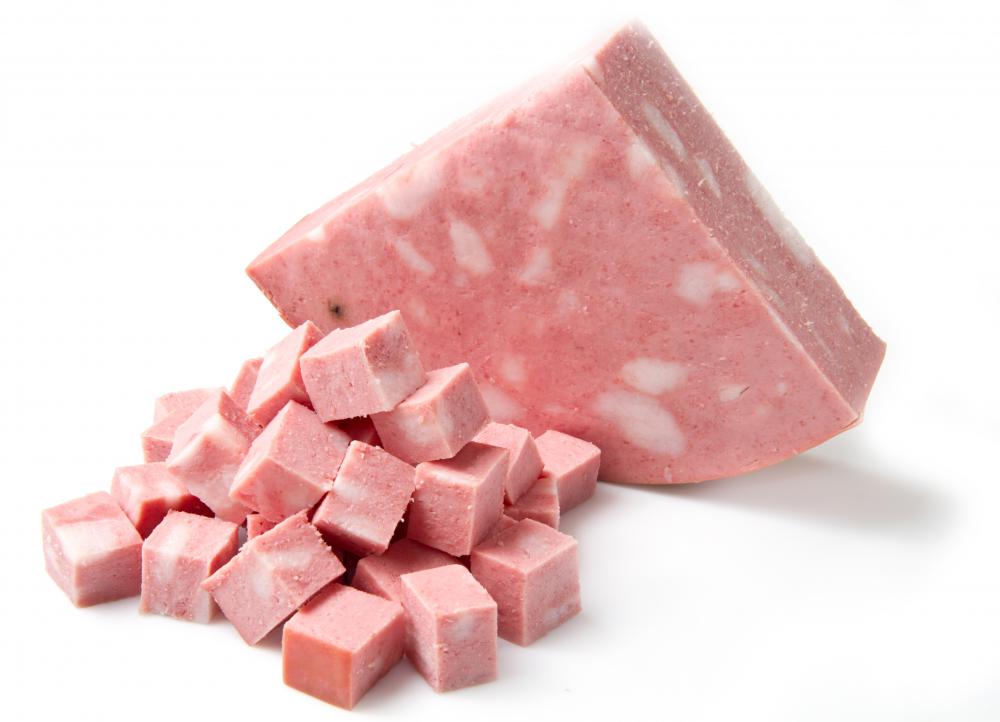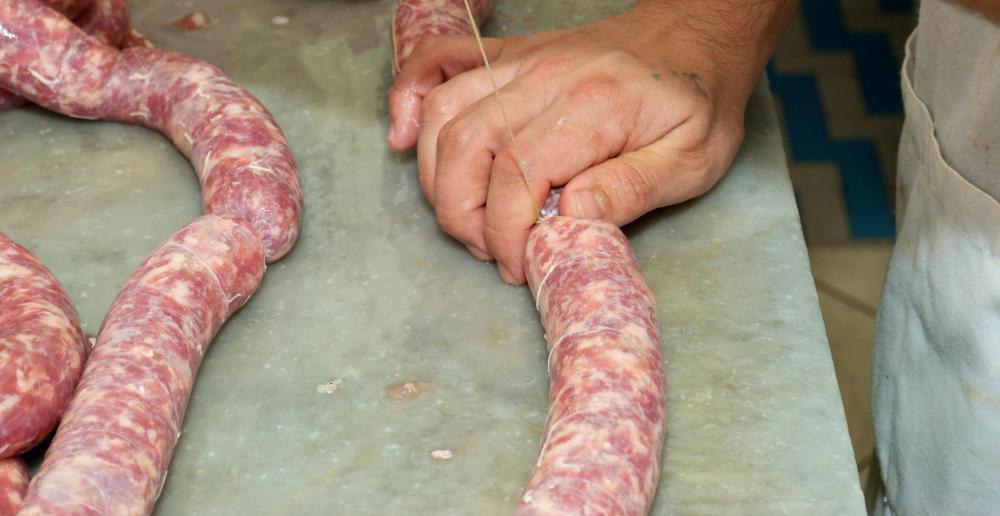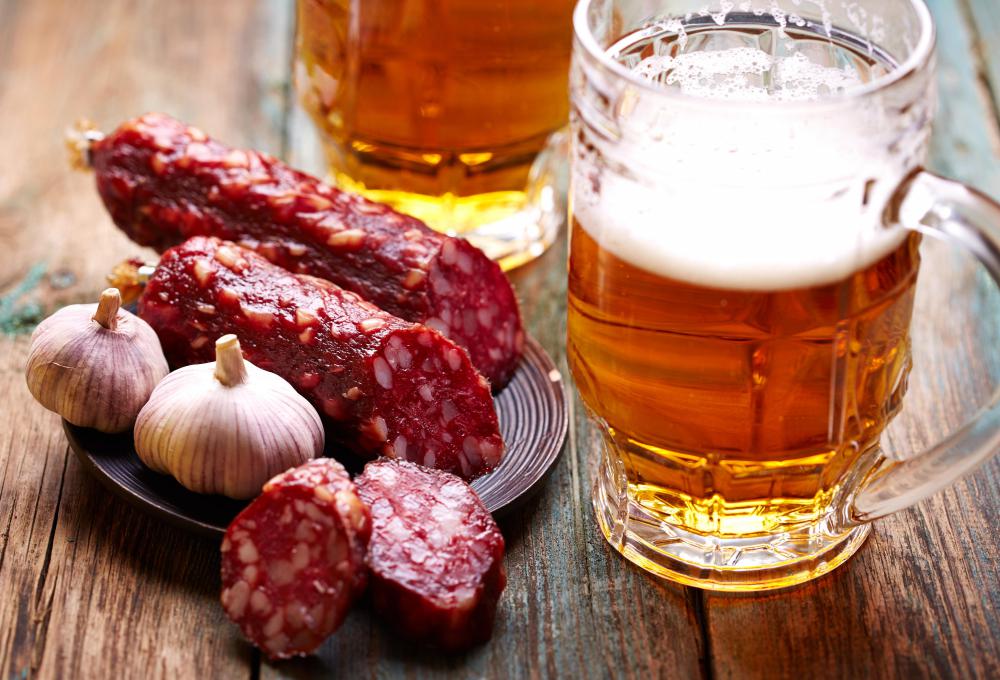At WiseGEEK, we're committed to delivering accurate, trustworthy information. Our expert-authored content is rigorously fact-checked and sourced from credible authorities. Discover how we uphold the highest standards in providing you with reliable knowledge.
What is Summer Sausage?
Summer sausage is a seasoned sausage that is thoroughly cured and does not require refrigeration. There are many varieties of this sausage, including cervelat-style sausages such as blockwurst, thuringer and mortadella. People in many countries, especially those in Eastern Europe, have their own varieties of these sausages, dating to periods when meat needed to be well preserved because refrigeration was not an option. This food product is often available at butchers and in boutique shops that import special regional foods.
Despite its name, summer sausage is not necessarily made in the summer, although it can be. It is made with meat scraps, like all sausage, so it tends to be made when animals are butchered, which is often in the fall or spring. The sausage might also be made with a combination of meats for efficiency and flavor variety. Cuts are often kept lean to ensure that the sausage does not become rancid during the curing process.
Types of Ingredients

A common combination in summer sausage is beef and pork, although venison and other game meat might be used as well. Some of these sausages also traditionally contain organ meat, although this culinary tradition has waned. Salt is always used in the seasoning of summer sausage because it promotes a sound cure. Pepper, mustard seeds and sugar might be used as well in some regions. People from different areas have their own seasoning traditions, resulting in a wide range of flavors within this diverse family of cured meats.
Careful Curing

After the ingredients are thoroughly combined and forced into sausage casings, summer sausage must be cured. Cures for this sausage vary, with it generally being smoked or dried. Traditionally, air drying is accomplished in the open on large racks that take advantage of seasonal winds. Smoking is slowly done at a very low temperature to create an even, strong cure. Complete curing might take weeks or more than a month, and careful monitoring is needed to ensure that the sausages have not gone bad.
Preparation and Serving

After curing, summer sausage generally can be eaten straight, and it is often served cold. The end texture is semi-dry to moist, depending on the type of cure used. It can be heated or cooked, or it might be tossed with other foods. Some modern versions might be less extensively cured, requiring refrigeration and cooking before it can be used. The flavor of this type of sausage is more mild and less salty than true summer sausage.
AS FEATURED ON:
AS FEATURED ON:















Discussion Comments
If you are really looking for some quality summer sausage, check out Sparrer Sausage. They have been making sausage out of Chicago since 1938 and boast an array of great products like snack sticks, sliced salami, and sausage chubs.
@widget2010, I have spent some time in Slovakia, and the case is very true there. For homes which keep pigs, making summer sausage is a huge ritual each year, beginning with the killing of the pig. While soeme people do make homemade summer sausage with other animals, pork is the primary ingredient here, and every step of the process, from beginning to end, is overseen carefully when it summer sausage is made at home.
Summer Sausage is still very popular in Eastern European countries, where it is a big part of traditional cuisine, and a way to use pork, a large part of the Eastern European diet. Most families in these countries have their own summer sausage recipes, which vary by region. Like wine and other traditional meals, summer sausage is a big draw for tourists in these areas.
Post your comments